South Indian Wedding Traditions
A Hindu Wedding Ceremony has slight variations based on which community or region in India your family belongs to. Today we will focus on the South Indian Wedding Traditions. Fine art wedding photography by Priyanka Sachar.
Mangala Snaanam
As a part of Mangala Snaanam custom, the bride and groom are required to take an auspicious bath, in their respective homes on the day of the wedding, to prepare themselves to perform the sacred rites and rituals.
Pellikuturu or “Making of the Bride”
The bride is adorned by her mother, sisters, aunts, and close friends. In this ceremony, the bride’s relatives help her with her hair, makeup, wedding sari, and jewelry.
Ganapati and Gauri Puja
Ganesha, being the remover of all obstacles, is worshipped to inaugurate the wedding ceremony to keep away all impediments. Gauri Puja is held at the Bride’s residence with the bride herself, and all her family members in presence before they leave for the actual ceremony.
Nandi Devata Puja
Nandi Devatas, or the presiding deities are propitiated by installing a leaf-laden branch of the pipal tree, and an ablution with milk, performed by five Sumangalis or married ladies.
Navagraha Puja
This Puja is performed to invoke the nine (nava) planets (graha) that rule over man’s destiny.
Vratham
The South Indian wedding ceremony begin with a Vratham, performed separately by the bride and the groom. For the bride, it means the tying of the Kappu or holy thread on her wrist which is meant to ward off all evil spirits. It symbolizes a kind of the protective armor for the bride. The groom worships the deities: Indra, Soma, Chandra, Agni, to prepare himself for a new chapter in his life as a householder or Grihasta, as the days of his bachelorhood come to an end.
Kaashi Yatra
This is an important South Indian Wedding ceremony, that brings the bride and groom’s families closer together. In this ceremony, the groom pretends to go on a Kaashi Yatra, where he renounces the worldly pleasures and and makes his way to Varanasi in slippers, umbrella and a bamboo fan. On his way there, the groom is stopped by the father of the bride, where he persuades him to assume the responsibility of a household and promises to give him his daughter as a companion to face the challenges of life.
Jana Vasam: Ushering in of the Bridegroom
The bridegroom is brought to the wedding venue in a procession from the temple. Nadaswaram band leads the way of the procession. The groom is escorted by the bride’s parents, and welcomed at the wedding mandap.
Vaaku Nichaya Muhoortham
In this ritual, the father of the bride and the bridegroom’s father face each other and solemnise the final betrothal ceremony of the groom. The priest chants the relevant mantras in which the names of the bride, the bridegroom, as well as the names of their three generations of ancestors, are cited in presence of all the wedding guests.
Exchange of Garlands
The bride and the groom are lifted on the shoulders of their respective uncles to exchange garland with each other three times representing a complete union. A garland worn by a person, should not be used by another and here the exchange of garlands symbolizes the couple’s unification.
Oonchal: Swing, Ride and Singing of Laali
The bride and groom are seated on a swing or Oonchal, where they rock forth and back, as the ladies around sing Laali, or songs to praise to the couple. The chains of the swing signify the eternal Karmic link with Almighty above, and the to-and-fro motion of the swing represents the ups and downs of life.
Vara Puja
The feet of the groom are washed in milk, and wiped off with silk. Water, and lighted lamps are circulated around the swing in order to guard the couple against demons and ghosts.
Kanya Dhaanam
In this ceremony, father of the bride gives the bride away to bridegroom. In South Indian Weddings, the bride is made to sit on her father’s lap before she is given away.
The Bridegroom’s Assurance
After the Kanya Dhaanam, the bridegroom assures bride’s father, that h will be the bride’s companion in joy and sorry, in this lifetime and after death as well.
Kankanam Dharanam
In this ceremony, the bride ties a string fastened to a piece of turmeric, around the wrist of the bridegroom to bind themselves by a religious vow. The groom also ties a similar thread or Kankanam on the bride’s wrist.
Maangalya Dharanam
At an auspicious hour, tying of Mangala Sutra or Thaali takes place. The bride looks eastward, and the bridegroom faces westward while tying the gold Mangala Sutra around the neck of the bride. As he does so, the Nadaswaram drums are beaten loud and fast. The Mangala Sutra represents the physical, mental and spiritual union of the couple.
Paani Grahanam
Paani Grahanam translates to “holding hands”. The groom holds the hand of the bride, while Mantras are recited. The gist of the mantras is, “God has offered you to me and we shall never part from each other!”
Saptha Padi
Holding the bride’s hand, the bridegroom walks seven steps with her. This is the most important part of a Hindu Wedding ceremony, and only when the couple takes seven steps together is the wedding ceremony complete.
Pradhaana Homam
Paying homage to Agni, or the Fire God, is one of the crucial ritual in a Hindu Ceremony. AGNI, the mightiest power in the cosmos, the sacred purifier, the all-round benefactor, is deemed as a witness to the marriage (Agni Sakshi). The bride and groom circle around the fire, and feed it with ghee, and twigs of nine types of trees, as a sacrifice. The fumes that arise out of the fire, are have medicinal and cleansing effect on the couple.
Treading on the Grindstone
Holding the bride’s left foot toe, the bridegroom helps her tread on a grindstone kept on the right side of the fire. The Mantras say: “Let thy mind be rock firm, unperturbed, by the trials and tribulations of life! ”
Showing the Arundhati Star
The groom shows the bride the Star Arundhati of the Ursa Major or Saptarishi Constellation, as also Dhruva the polestar, so that the wife can emulate the virtues of these two stars in her married life. Arundhati, the wife of Vasishta Maharishi, is exemplified as an ideal wife. Dhruva is the one who attained immortality through single minded devotion and perseverance.
Laaja Homam
This ceremony comprises of the bride’s own sacrificial offering to the fire, with the help of her brother. The bride’s brother gives her a handful of parched rice grains which she hands to bridegroom who on her behalf, feeds it into the fire. Through this food offering, the bride seeks a long life for her husband, and propagation of the family. Participation of the bride’s family members indicates the continuance of links between the two families. The couple circle around the fire, three times, and the feeding of the fire with parched rice, is repeated three times.
Showering of Rice
Akshadai or rice grains coated with turmeric and saffron, are showered on the couple, by elders and invitees as an Aashirwaad or benediction.
Mangala Aarthi
A solution of lime, and turmeric powder is prepared on a plate, and circled around, and thrown away to ward off evil eye. This is done a number of times during the entire wedding ceremony, and at the end to conclude the wedding ceremony.
Griha Pravesham
After the completion of the wedding ceremony, the bride is formally taken to the groom’s house, where she is welcomed by the groom’s family members. As the bride steps into her new home, she kicks a vessel full of rice with her right foot across the doorstep. The rice spills over and falls on the ground and this symbolizes abundance of wealth with her entering into the family.
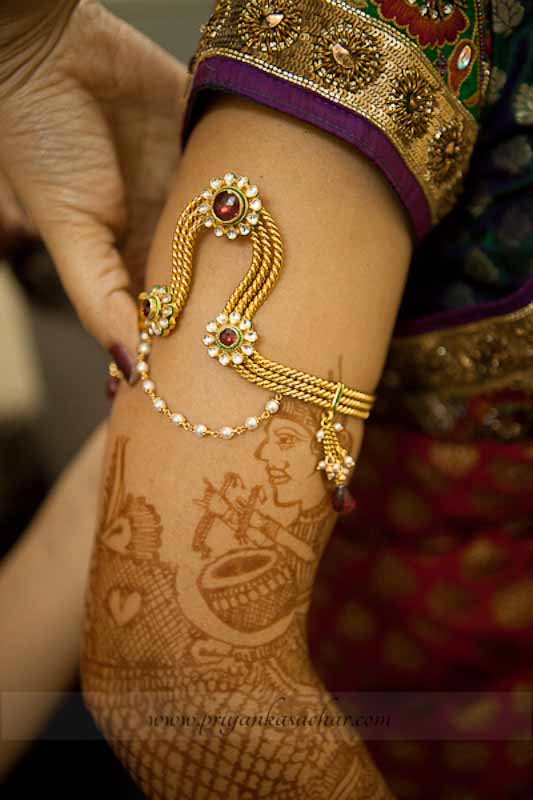
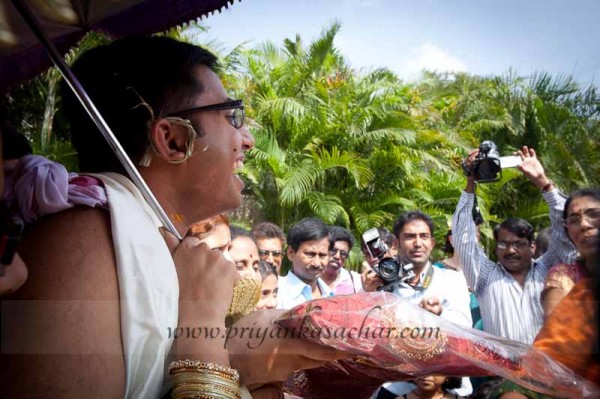
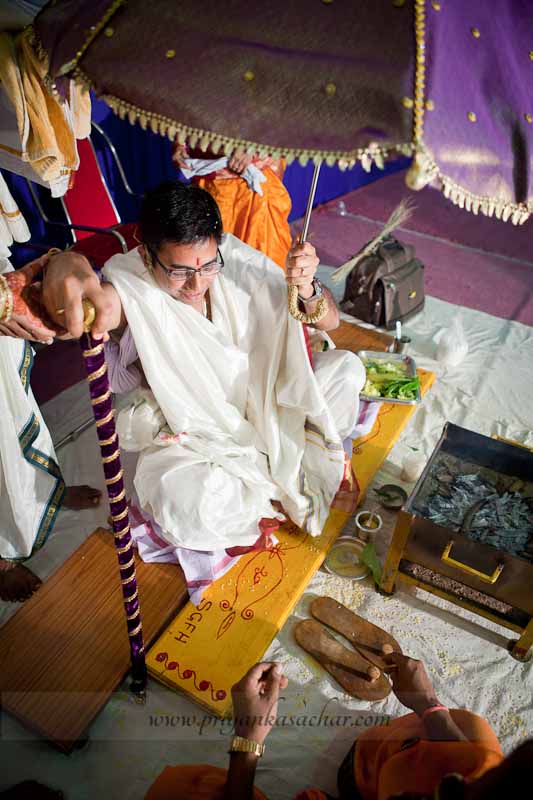
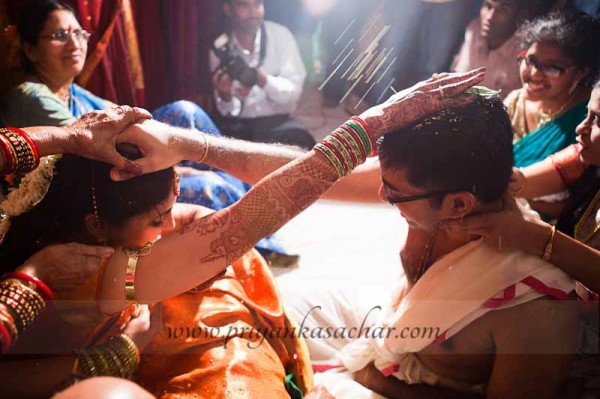
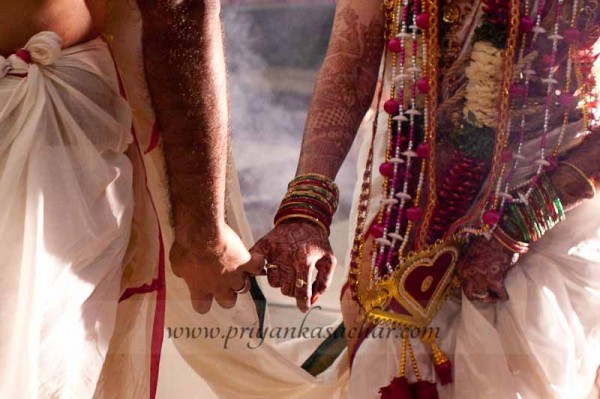
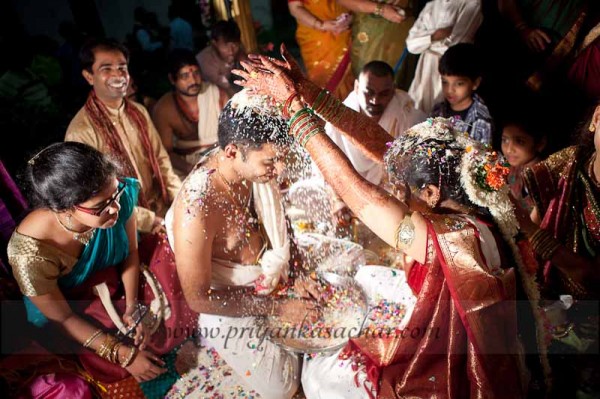
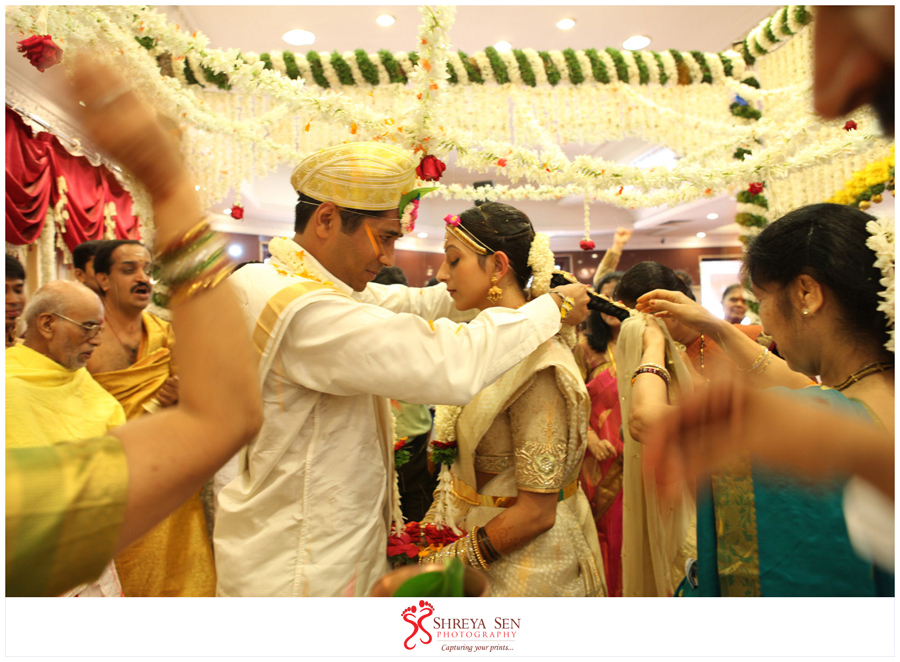 Radhika and Vikas: Featured Wedding – Part 2
Radhika and Vikas: Featured Wedding – Part 2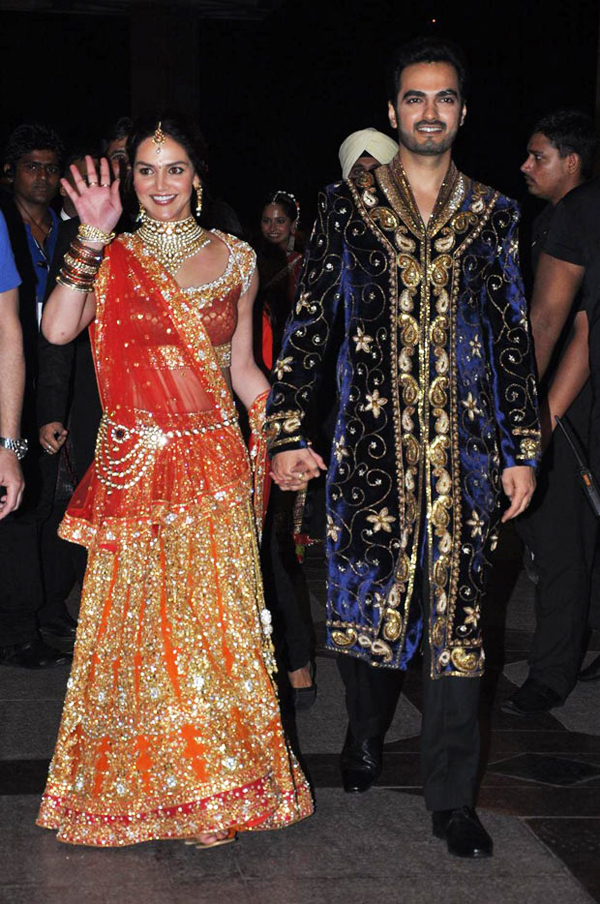 Featured Celebrity Wedding: Esha Deol and Bharat Takhtani
Featured Celebrity Wedding: Esha Deol and Bharat Takhtani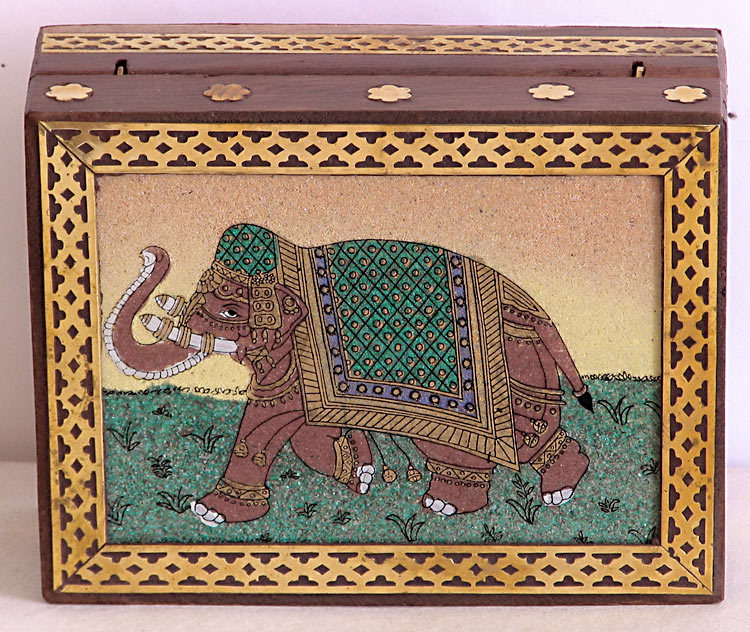 Fabulous and Personalized Favors
Fabulous and Personalized Favors
swetha says
I love it! Good job on the write-up!
Dharati says
Hi Neha,
This is a really good description I have been looking for this detail but simple explanation of south indian wedding rituals.
I am a gujarati soon will be getting married into south Indian family,
and this helps a lot thank you.
neha says
Hi Dharati – Congratulations on your upcoming nuptials! Thank you for reading Marigold Events and I am glad that the article helped. Good Luck and let me know if I can be of further assistance 🙂
Dharati says
Hi Neha
Thank you for your reply.
I was just wondering I know that there are lot of sites for Indian brides in america to plan their wedding on line like the indian weddingsite, however as I am from UK I was wondering is there or are there any sites like that, which I can use here in the UK or which are UK based?
I think that it would be nice to have something like Indianweddingsite for the UK brides.
Regards
Dharati
neha says
Hi Dharati,
I would suggest you email Indian Wedding Site and ask her if she knows vendors based in UK 🙂
Thanks,
Neha